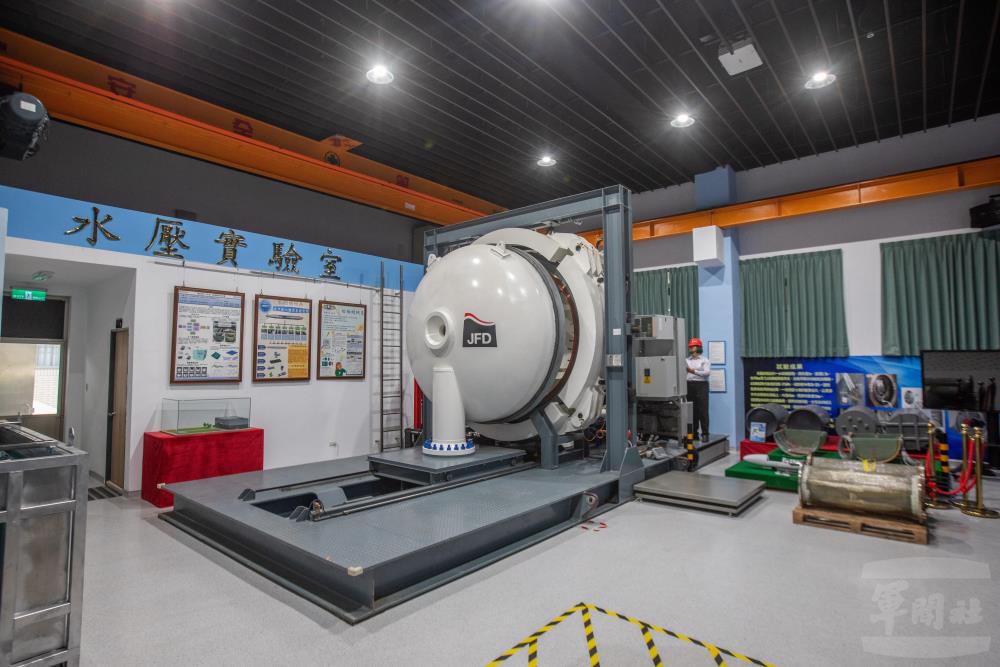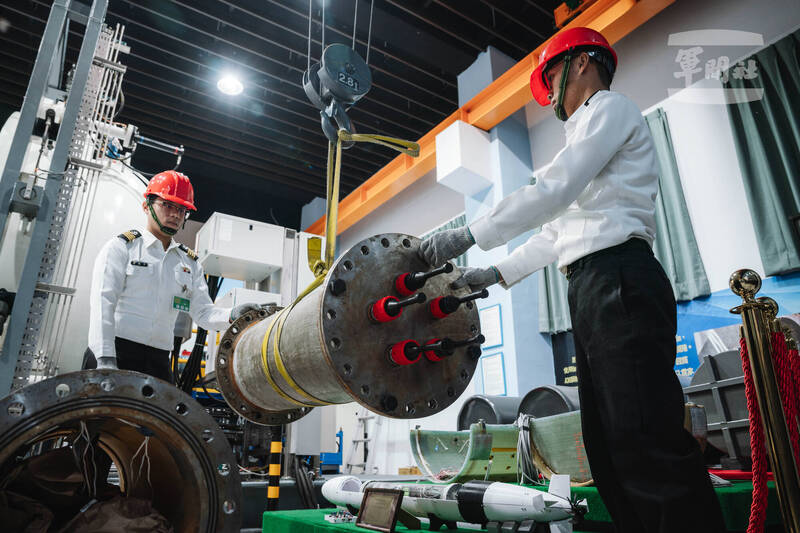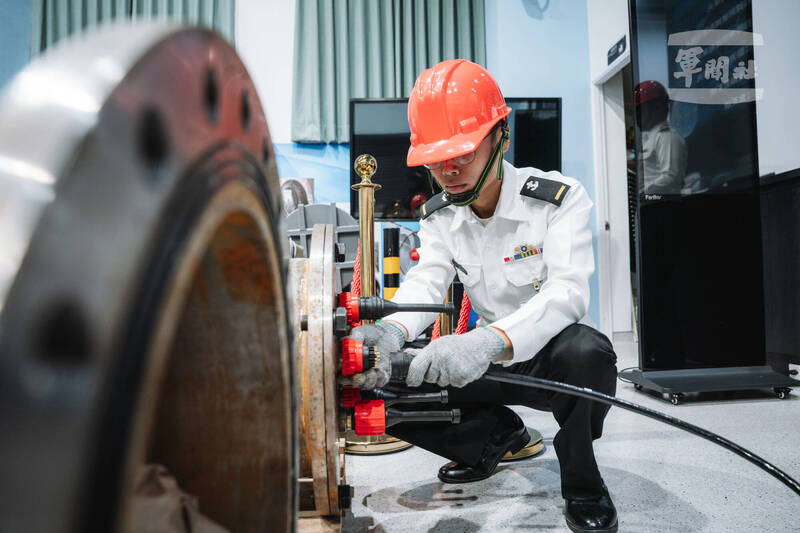



- Time:
- 2025-02-01
- Unit:
- Dept. of Marine Mechanical Engineering
- Content:
-
Forwarding (Military News Agency reporter Chen Yan-hua Kaohsiung 27)
In order to strengthen the practical ability of students at the Naval Academy and to meet the needs of the future battlefield, the Department of Ship Mechanics at the Naval Academy has completed the construction of the “Hydrostatic Laboratory” in three years. The Laboratory is currently the largest hydrostatic laboratory in the country, which can not only simulate a high-pressure deep-sea environment, but also conduct a number of pressure tests on ship structures and operational equipment, making it an important field for both education and scientific research.
The establishment of the Hydrostatic Laboratory at the Naval Academy is based on the forward planning for the future needs of the Navy. The Laboratory specializes in underwater pressure-resistant structures and conducts mechanical testing research under extreme environments, including static structural components and operational equipment, all of which are able to simulate underwater high-pressure environments for testing. Professor Hsu Hing-yu of the Department of Ship Mechanics at the Naval Academy pointed out that the Hydrostatic Laboratory not only provides a real operating field for the students of the Academy to verify the design theory of the ship, but also supports the research and development of naval weapons and equipment to enhance their reliability and performance in extreme environments.
Since the establishment of the Hydrostatic Laboratory, the Naval Academy has been actively promoting industry-academia cooperation, and has completed a number of hydrostatic testing projects with renowned universities and research institutes in China, such as the underwater hydrostatic test program for MK6 detonators and the structural strength certification of FRP underwater pressure chamber, which demonstrated the excellent functions of the Laboratory. The results of these collaborations have effectively promoted the advancement of ship technology to further meet the warfighting needs of the National Army.
In the process of building the Hydraulic Pressure Laboratory, the Naval Academy has integrated the “Submarine National Construction” program to deepen students' understanding of submarine technology based on this field, and to cultivate military commanders with modern warfare qualities. Prof. Tsui said that the core objective of the laboratory is to develop students' professional ability in pressure testing and design of ship structures, and through the combination of theory and experiment, to enable students to cope with the severe challenges of the high-tech battlefield in the future.
The establishment of the Hydraulic Laboratory not only injects new energy into the national military education system, but also demonstrates the perseverance and efforts of the Naval Academy in enhancing students' practical abilities and scientific research achievements, making it an important model for modern naval science and technology education.
- Links:
- Environmental Tour
- Contact:
- Note:







